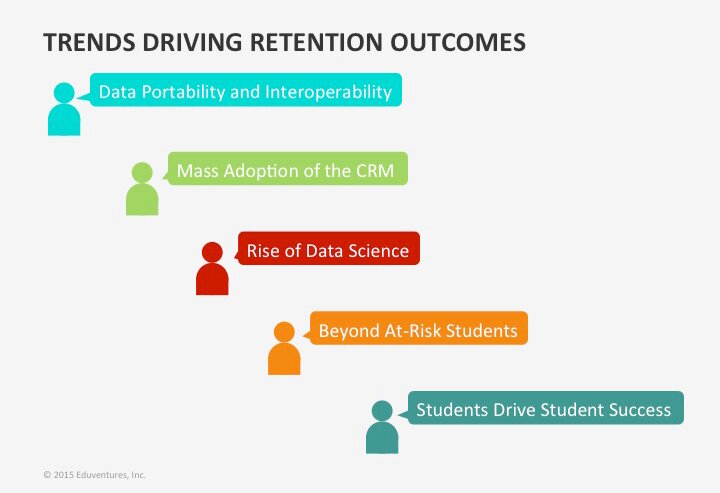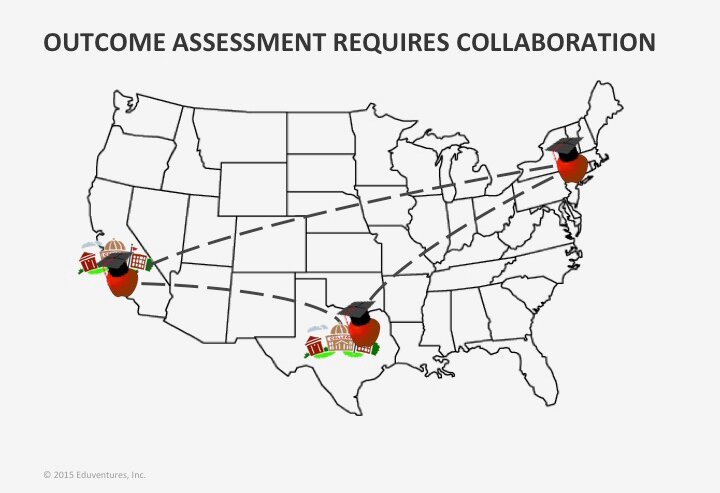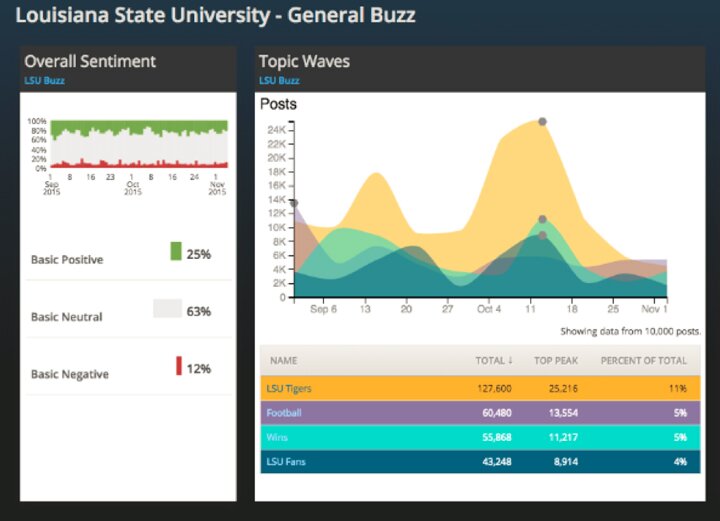On November 18-20, Eduventures hosted higher education leaders from around the country for a three-day discussion about the next frontier for colleges and universities. We developed this year’s program to provide higher education leadership with strategic advice and guidance on how to prepare for the future. The depth and breadth of the program and the stellar lineup of speakers made it an event to remember. Below, we’ve included five key insights from the conference on the future of enrollment strategy, student success, student outcomes, fundraising strategy, and learning analytics. Flip through the slideshow, or scroll down the full list!





The Future of Enrollment Strategy – Kim Reid
Most often, enrollment leaders have approached market segmentation simply by examining demographic or geographic differences (i.e., Do women think differently than men? Do prospects from the Northeast think differently than prospects from the South?). A better approach is to segment based on a critical behavior such as the reason a student would choose to attend a college or university. The best yet is a more complex segmentation, in which behavioral patterns and attitudes define unseen, naturally occurring segments of the market. These segments can be described in detail by the underlying behavioral and attitudinal patterns and be further described by their demographic profiles. That’s what this segmentation of parents of prospective college students shows; classes of parents coalesce when you consider the rich and varied expectations parents have for the outcomes of their child’s education. Natural segments like these identify market mindsets that can be applied across the student lifecycle. If you know how a prospective student or parent thinks, you can better find the intersection between market expectations and institutional capacity.
A Renewed Approach to Student Success – Max Woolf
While it may appear that there are significant hurdles to the horizontal integration of data across the student lifecycle, Eduventures research suggests that the five trends outlined below will mitigate some of these challenges and increase the speed of integration. Each of these growing trends facilitates new levels of engagement with students to maximize the impact on their outcomes throughout the student lifecycle. Successful higher education leaders are at early stages of developing a coherent cross-institutional data strategy that breaks down historically-siloed departments. They are also increasingly partnering with a growing number of retention solution providers that can support campus-wide, data-driven decisions. Successful student success strategies will mix partnerships with integrated retention solution providers and strategic campus activities.
An Evolution in Student Outcomes – Karen Svarczkopf
With intense scrutiny on the value of higher education, the government, regulators, and accreditors are increasingly holding colleges and universities accountable for the outcomes of their graduates. No other segment of higher education feels this scrutiny as intensely as leaders of schools of education. Asked by accreditors to track and report data on their graduates for three years following graduation, they are finding that the infrastructure for outcomes data sharing is woefully inadequate for this task. According to the Data Quality Campaign, for example, only 44% of states share their P-12 data with educator preparation programs, and no states share that data with out-of-state programs, making it extremely difficult to track outcomes for out-of-state graduates or those who move between schools. Online programs face even greater challenges, since many of their students never plan to work in the state where the college is located. The solution? Ultimately, education leaders know that understanding a program’s impact will only enable improvement for all students. Future-oriented schools of all stripes will develop partnerships with the stakeholders involved in gathering outcomes data. These partnerships will encourage shared ownership not only of that information but also of all students’ success.
Next-Generation Fundraising Strategy – Benjamin Schools
In an environment where alumni sentiment is rapidly changing, developing effective alumni engagement strategies must first be grounded in new sources of data. Up until now, social media feeds have been exclusively used by advancement leaders as one-way channels for delivering messages to alumni. However, what few advancement leaders know is that social media also represents our best new source of data to inform engagement, marketing, and fundraising strategies. Higher education is one of the last major industries to harvest social sentiment data to inform business decisions and the potential uses for this data are virtually limitless. The charts below demonstrate what the future holds for advancement offices seeking new sources of data. They show levels of macro sentiment over time, differentiating between promoters and detractors for the institutional brand. Micro sentiment, or the feelings of an individual alumna or alumnus, can also be harvested and analyzed to develop personalized major gift prospect strategies.
A New Frontier for Learning Analytics – Jeff Alderson
University CIOs are becoming more aware of the potential that enterprise-wide analytics hold for their schools. Among other use cases, enterprise-wide analytics can allow them to predict the likelihood of student success, respond to budgetary scrutiny, meet increasing student expectations for personalized learning, and aid in the smarter selection of effective technology tools and services. Despite these new advances, solutions providers still have a ways to go before the vision for a fully integrated data sharing system can be implemented. Although new technical standards have been introduced, such as IMS Caliper for data formatting and portability, there are still issues with the taxonomy and definitions of what to send between systems, how often, and why. A new class of vendors is emerging to handle issues of data alignment, transformation, and exchange between systems, including vendors that provide cloud-based analytics services separate from existing learning applications. Optimally, analytics can and should be centralized, including the storage of metrics and outcomes, standardized visualizations and dashboards, and providing a single point of entry for all stakeholders to access insights.

